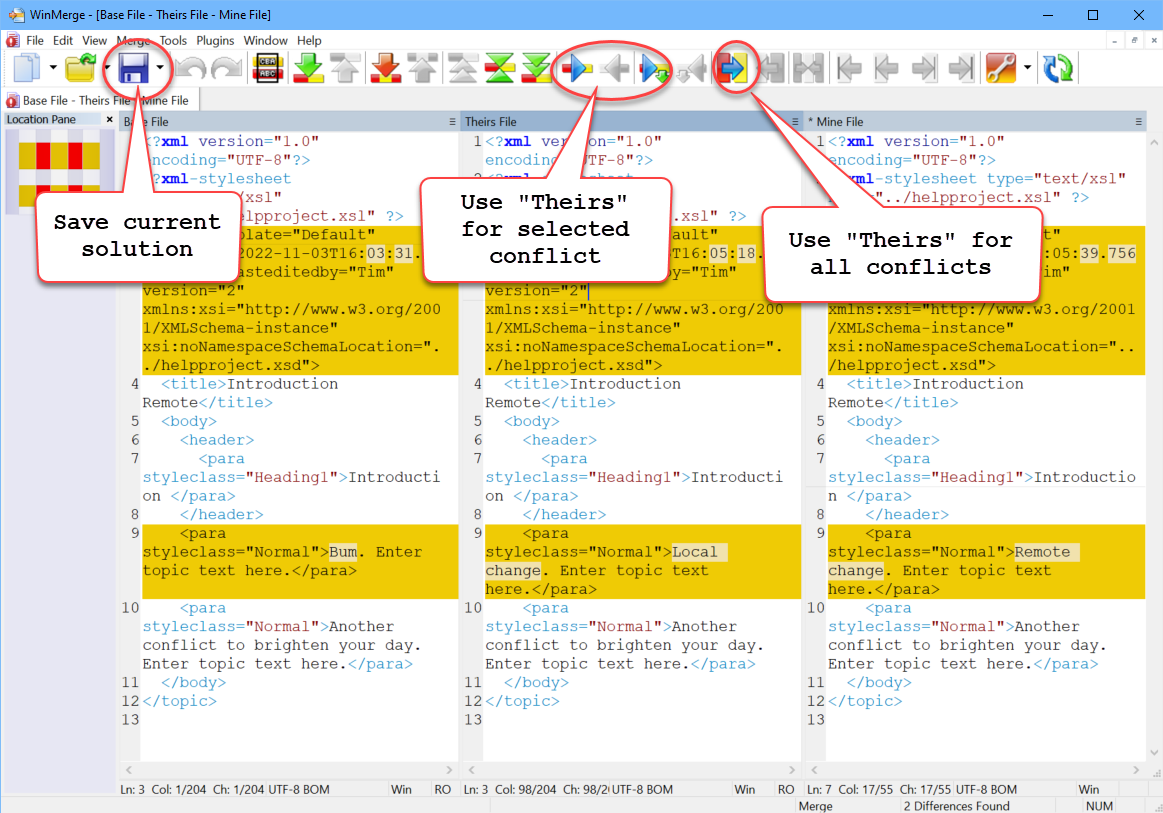Once you have configured Help+Manual for SVN and set up the SVN components and saved your local working copy, you can basically just edit normally. The only difference is that you need to synchronize with the repository copy before and after work.
Communicate with your colleagues
The most important part of work with version control is to make sure that you and your colleagues don't edit the same things at the same time. If you do, you will have to waste time resolving conflicts. It is particularly important to make sure that everyone knows when one of you deletes a topic or changes its ID. Editing a topic that another user has already deleted or renamed can cause serious conflicts that can only be resolved centrally by the administrator.
•Always be clear about who is going to be working on what today.
•Always inform everyone before you delete a topic, change its ID or make any other structural changes in the project.
Synchronize before and after work
Always synchronize with the repository before you start work to get the latest changes, and after finishing work to add your changes to the repository. Those are the only times you need a connection to the repository. All your other work can be performed offline.
Once your project is set up for SVN, Help+Manual will display the SVN tool in the Project toolbar. To synchronize your project with the SVN repository you just need to click this tool.

The submenu offers a number of individual options, but you won't normally need these. Clicking on the main tool will both download new changes from the repository and upload your changes to the repository. So you just need to do this before starting work to get the latest changes from your colleagues and after you finish work to add your own changes.
Dealing with conflicts
If conflicts are found while synchronizing, the conflicted file will be opened in your merge tool so that you can choose which version of the conflict to keep. The merge tool provides a 3-way comparison of the XML source of the conflicted topic, showing the original server version, your version and your colleague's conflicting version.

